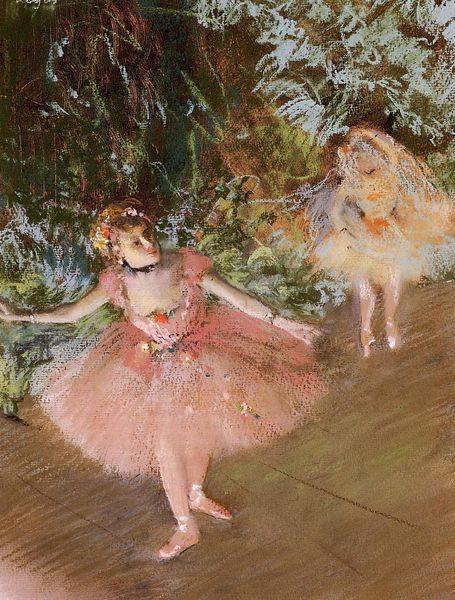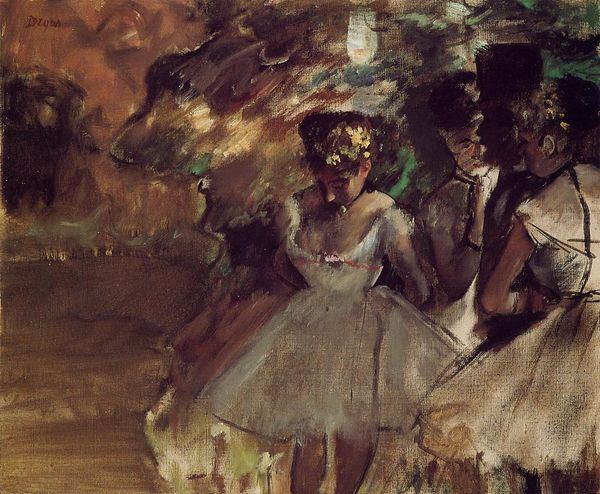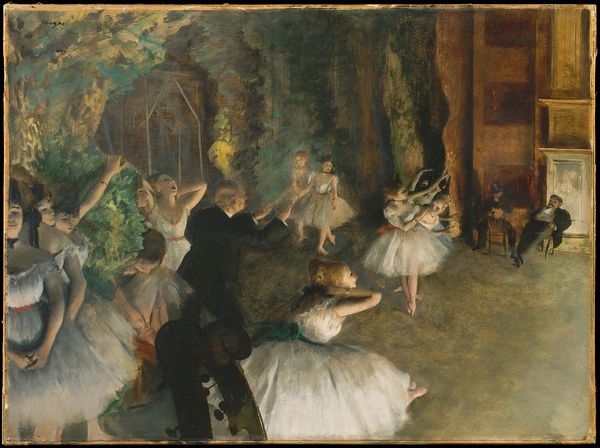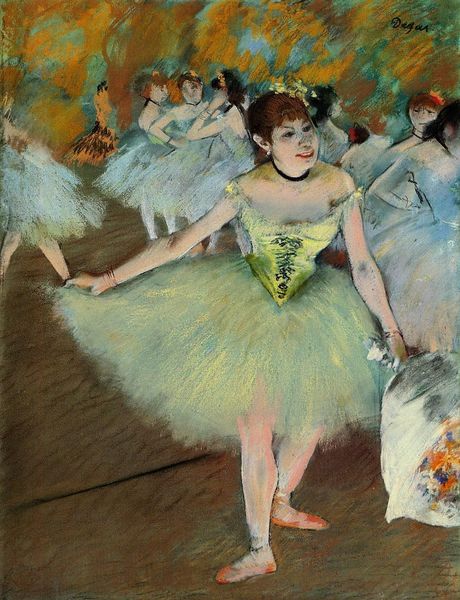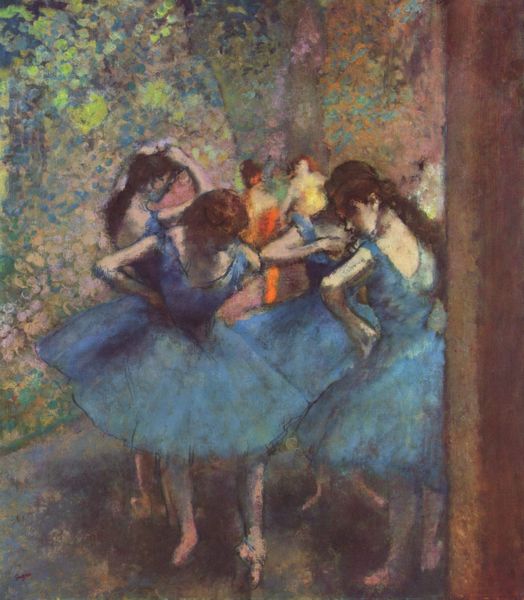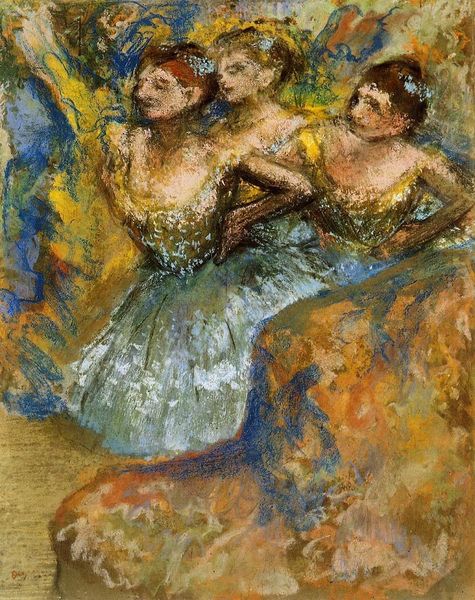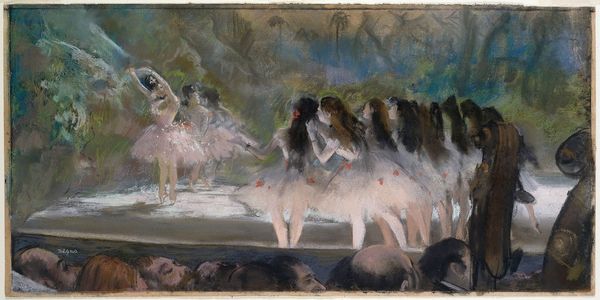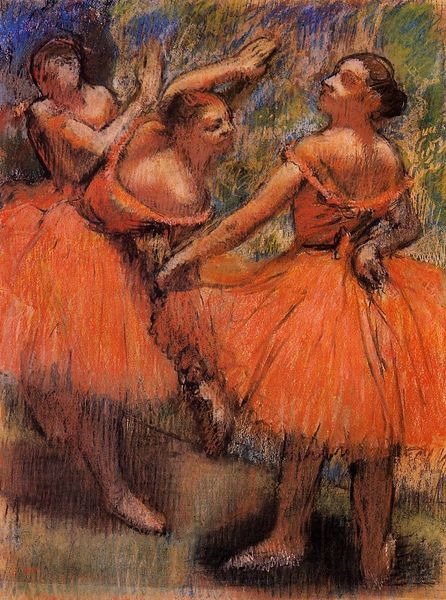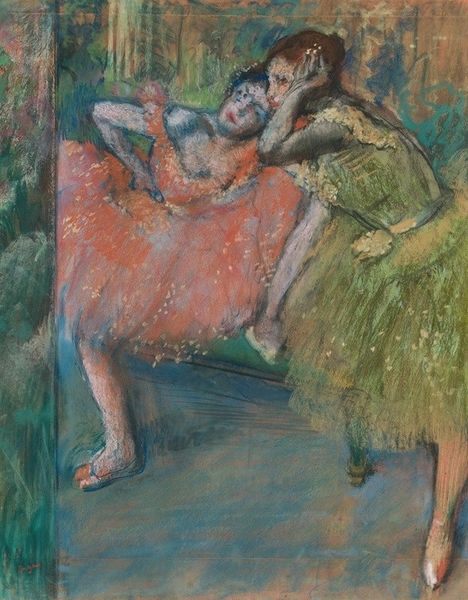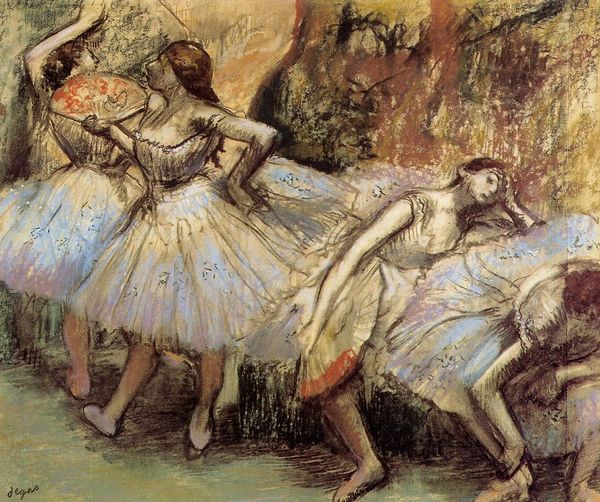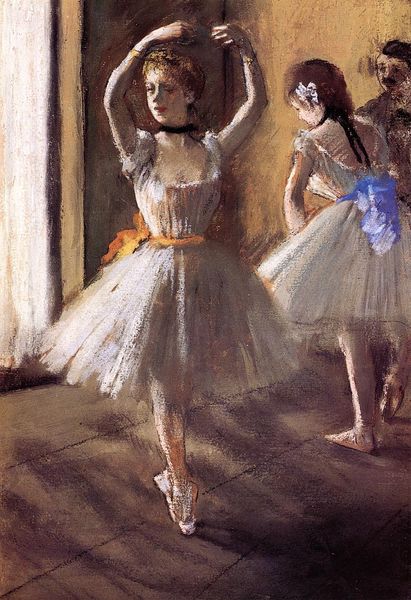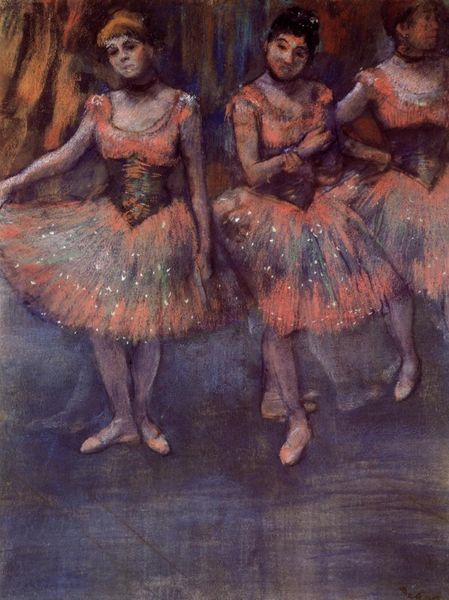
painting, oil-paint, impasto
#
painting
#
oil-paint
#
figuration
#
oil painting
#
impasto
#
group-portraits
#
genre-painting
#
modernism
Dimensions: 40 x 35 cm
Copyright: Boyukagha Mirzazade,Fair Use
Curator: Welcome, everyone. We're looking at Boyukagha Mirzazade's oil painting, "Backstage," created in 1972. It offers an intimate glimpse into the world behind a performance. Editor: It's intriguing! The flurry of ballerinas prepping in a semi-visible space. It evokes a mood of hushed excitement blended with fatigue. It is like witnessing a hidden ritual. Curator: Exactly. Mirzazade employs an impressionistic style, with visible brushstrokes that add to the sense of movement and impermanence. It really gives one a look at the physicality and labor that is usually unseen. Notice the impasto technique in the tutus. Editor: The dancers themselves, though, seem to carry these deeper resonances, right? Ballet has its own rigorous symbolic structure and history. This image seems to nod to it. I am thinking about the duality present: the harsh and disciplined regime juxtaposed against the grace and artistry the public witnesses. Curator: Right, this goes beyond merely a visual representation. It is a layered approach to craft and what it yields when labor, material, and context all contribute to production. The white tutus aren't simply costumes but signifiers of a highly regulated performance tradition, indicative of wealth and class in the ballet world, as well. Editor: It's also captivating how these individual dancers seemingly surrender themselves to something larger, represented here by their shared ritual before taking to the stage, almost a religious consecration of sorts. You think of other visual depictions of dancers throughout history – Degas obviously comes to mind– but this piece sets a particular mood and carries its own symbolic language. Curator: Yes, thinking about Degas is really valuable in considering the development and changes in approaches to capturing such artistry over time. Mirzazade seems to be focusing on the performance itself as an action while Degas' focus was often the product of dance in its poised state, I'd argue. Editor: Definitely. Seeing the piece in this light gives "Backstage" new depth, beyond its initial surface appeal and its art historical and psychological symbolism truly offers insight into this microcosm. Curator: Indeed, a reminder that even seemingly weightless art forms rely on material processes, both on the body and the garment. It all points back to understanding labor, materiality, and the human form itself as intertwined concepts.
Comments
No comments
Be the first to comment and join the conversation on the ultimate creative platform.
